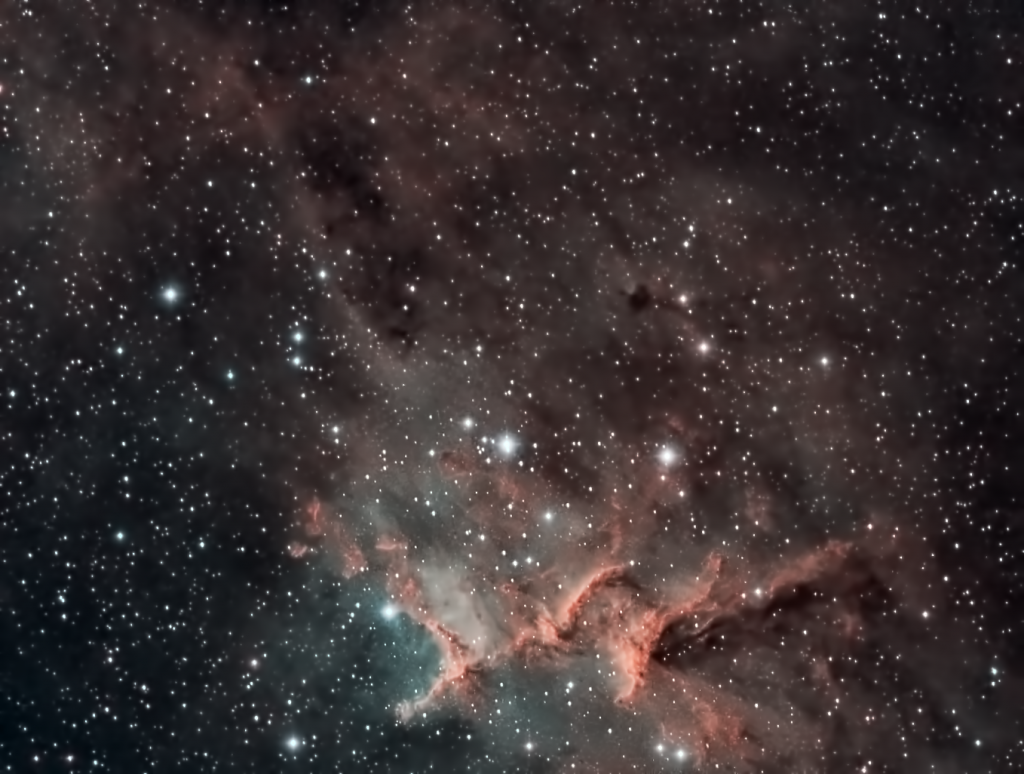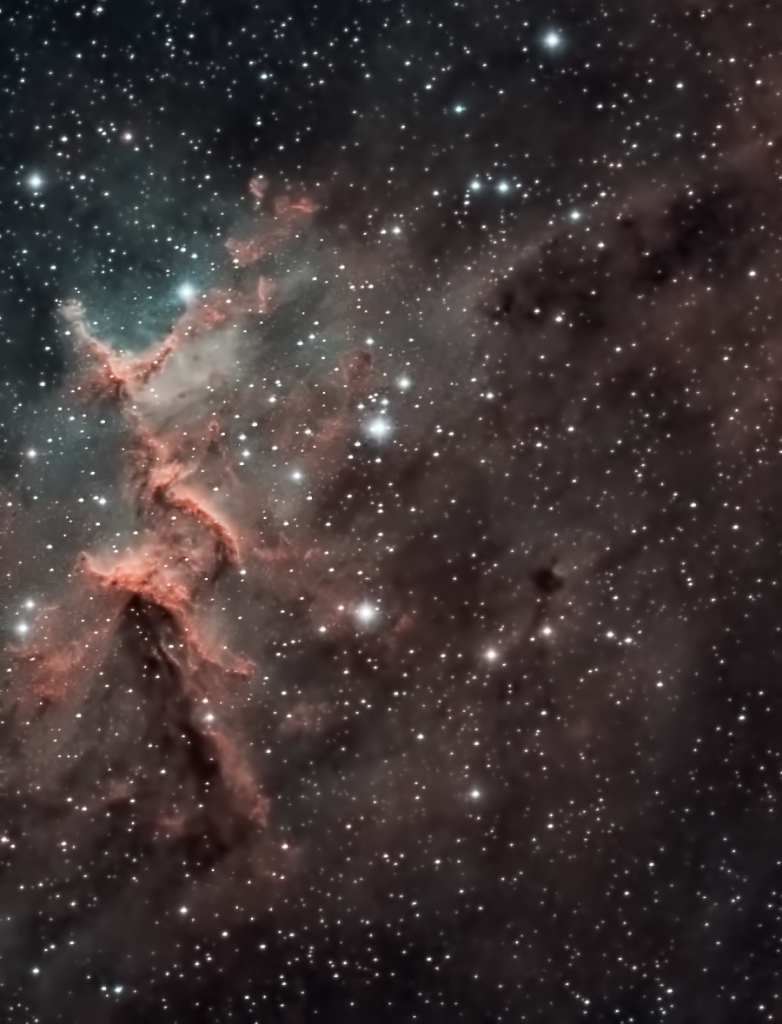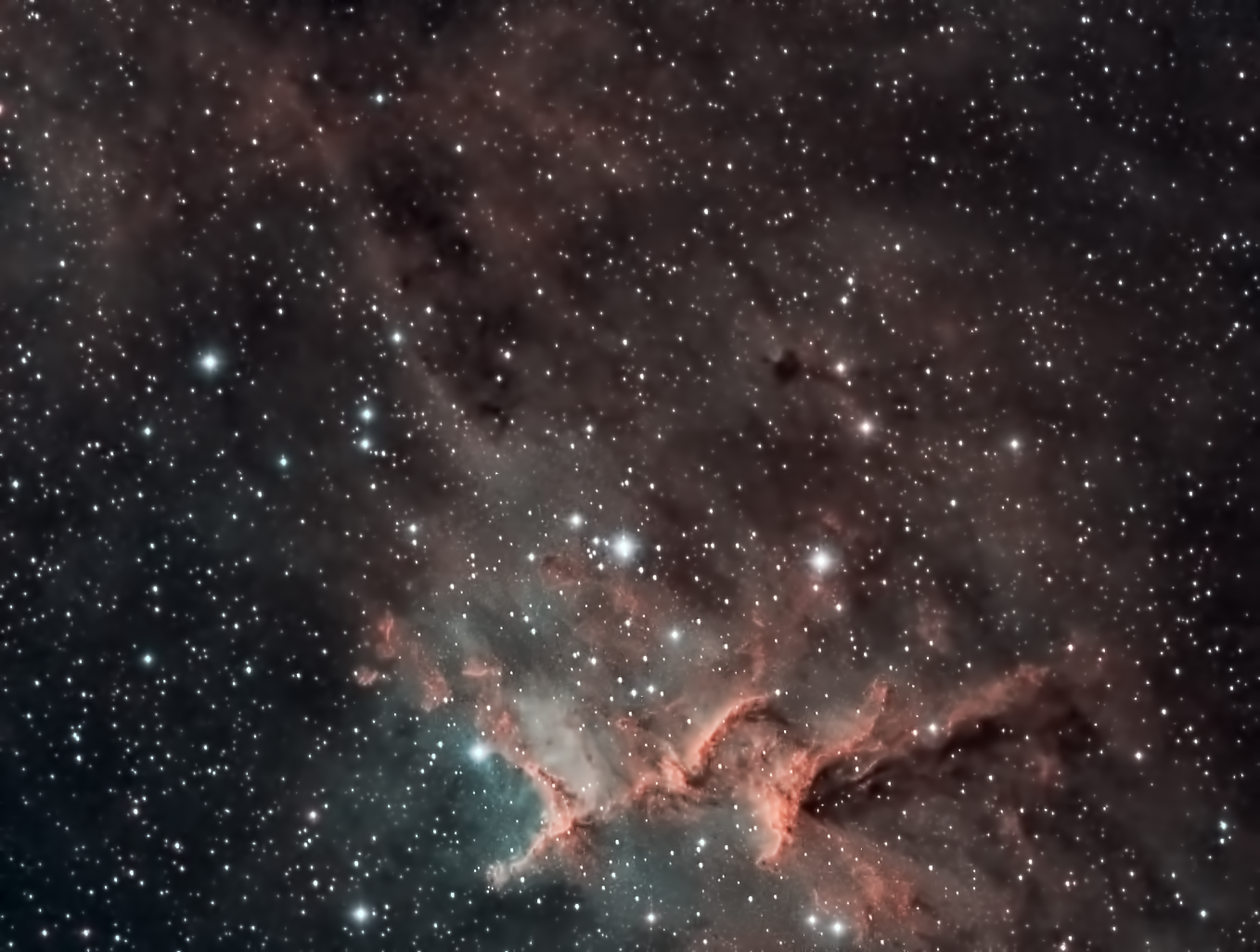
Similar Posts
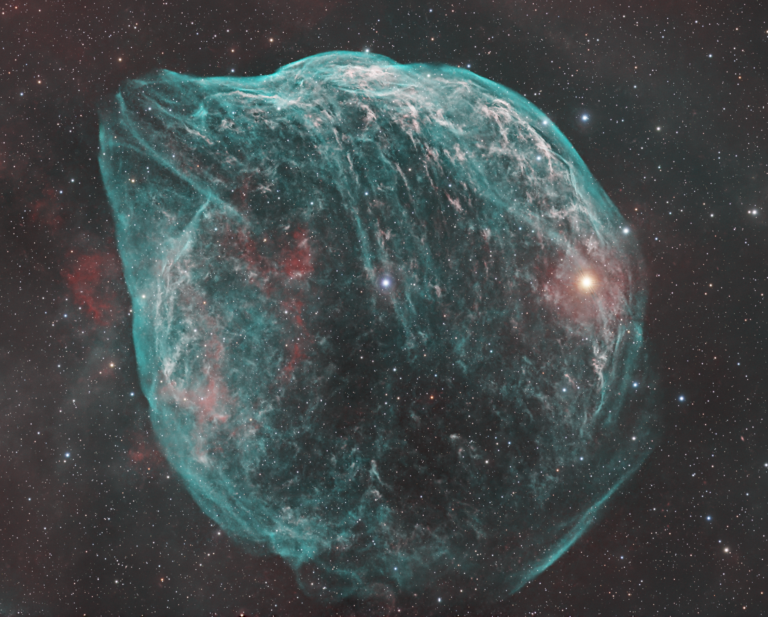
The Dolphin Head Nebula
A nebula that looks like its name! Formally SH-308, this bubble of gas 60 light-years across is blown out by a hot Wolf-Rayet star at its center. It’s about 4500 light-years away in the constellation Canis Majoris. It’s quite dim, but if you could see it with bionic vision or something, it would be larger…
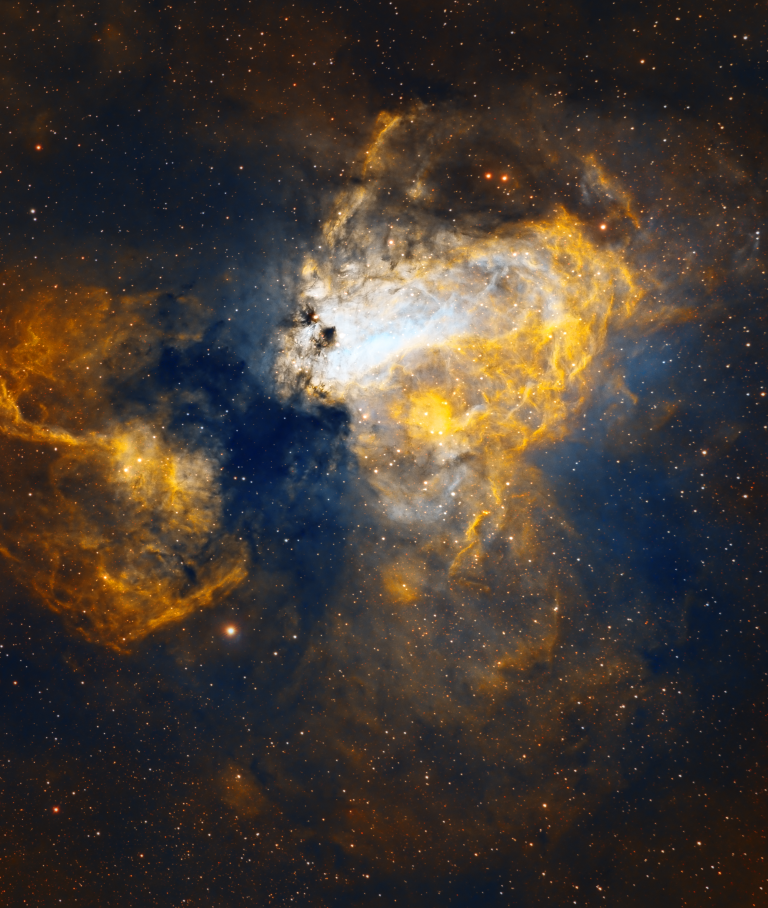
M17 doesn’t look like a swan to me.
M17 is commonly known as the Swan Nebula or the Omega Nebula. From this angle, I think it looks more like a crab – but “Crab Nebula” was taken! Shot over a hazy summer night, with narrowband filters for the gases of the nebula itself, and RGB natural-color filters for the stars. Presented processed with…
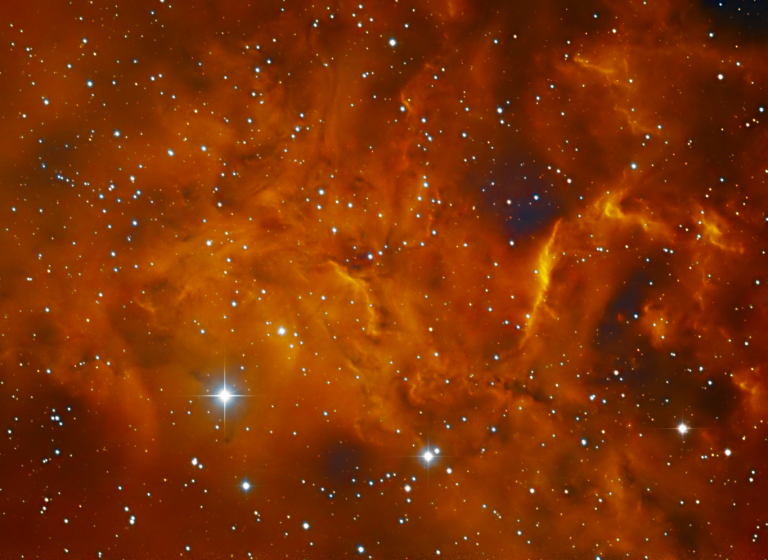
Flaming Star Nebula
Imaged in narrowband filters from my suburban driveway. This object lives up to its name with the right color mappings!
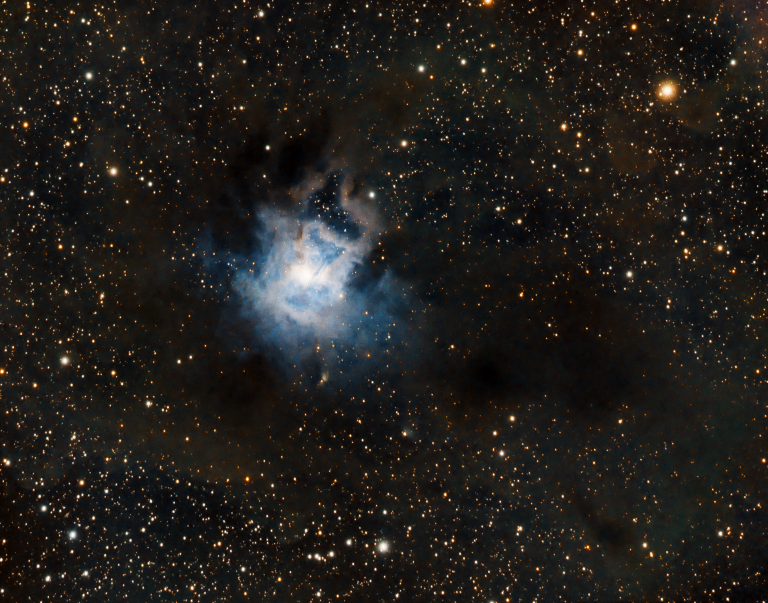
The Iris Nebula
Located about 1,300 light-years away, the Iris Nebula is a reflection nebula – unlike most of the nebulas on this site, it’s not made of ionized gases emitting light of their own. It’s just starlight reflecting off clouds of dust. Reflection nebula are harder to image in light-polluted skies, since the narrowband filters we use…
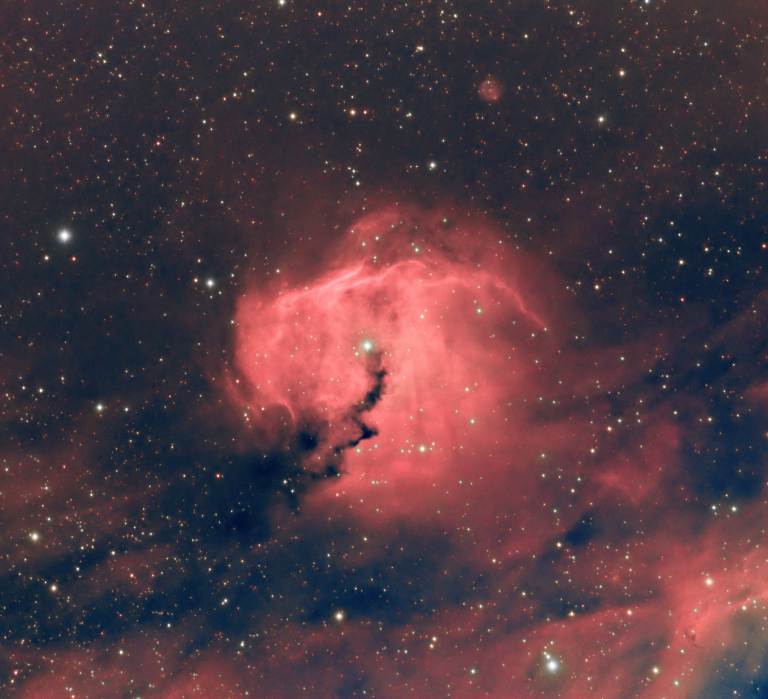
The head of the “seagull”
Formally this nebula is called vdB93, but more commonly it is a part of the “seagull nebula.” The larger nebula really does look like a flying bird, but it’s a little too big to fit in the field of view of my telescope – so I focused instead on its “head” where most of the…
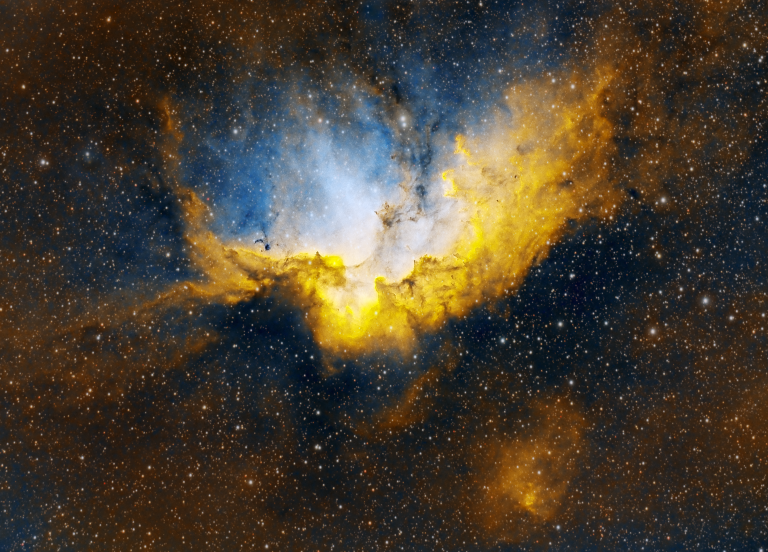
Off to See the Wizard (again)
These past couple of nights, I revisited the Wizard Nebula – home of a star cluster about 7,000 light-years away within the constellation Cepheus. This is a false-color image in the “Hubble Palette” where red, green, and blue represent ionized Sulphur, Hydrogen, and Oxygen emissions respectively. Can you see the “wizard”? Hint: he’s lying on…

